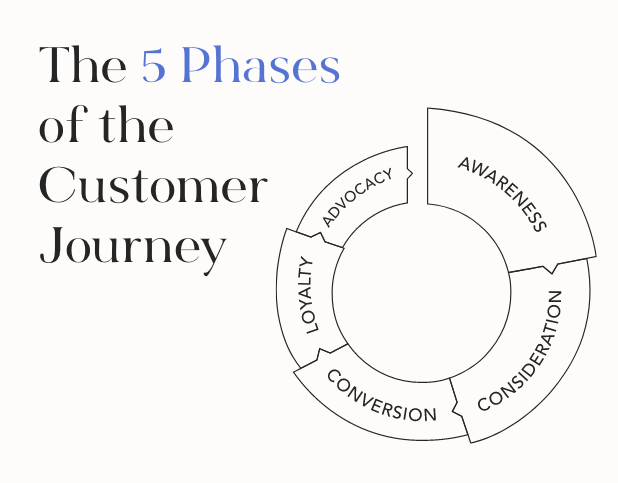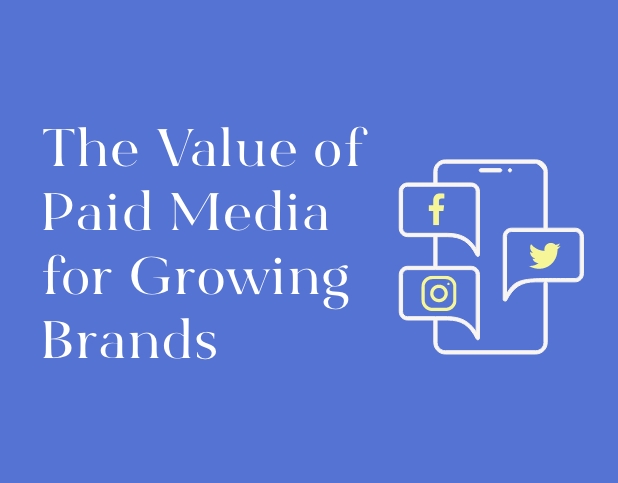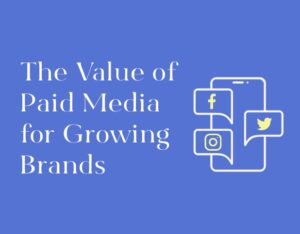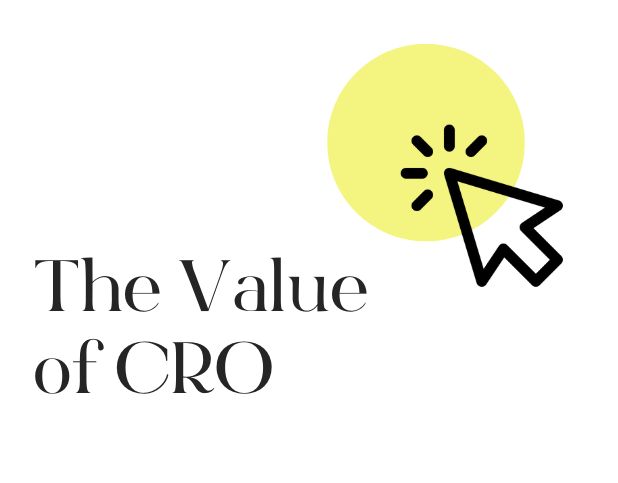What are the phases in the customer journey?
When mapping out a customer journey for a brand’s target audience, we break it down into five stages – awareness, consideration, conversion, loyalty and advocacy. Each stage of the customer journey is important and has its own purpose and objectives, and through extensive testing and analytics, we know that different types of content and messaging perform better at different stages.
Phase 1: Awareness
In the awareness stage, your main objective is introducing consumers to your brand. Through audience research, we can gather information about your customer’s pain points, what their interests are, and what type of messaging resonates with their intrinsic values. This is the first opportunity to connect with the consumer, whether that be on an emotional level or by educating them on a topic that they are interested in, ultimately encouraging them to engage with your brand’s content.
When it comes to paid social campaigns, the goal in the awareness stage is to get the customer to at least stop scrolling down their feed to stop and engage with your content. One of the metrics to position the campaigns towards is Ad Recall Lift, which in short, is how often a customer remembers your brand after seeing your ad. At this stage, another metric to consider is traffic, how many people are navigating to your brand’s site to learn more from a specific creative or ad. Video content tends to perform best at the awareness stage of the digital customer journey, so another metric to keep in mind is video views or average watch time. Ideally, the content at this stage will have a strong call to action so that consumers can click through to your brand’s website to learn more.
Phase 2: Consideration
Once customers have been made aware of your brand, they move into the consideration stage of the customer journey. At this stage, the customer knows enough about your brand to be interested but they’re not “sold” yet. Your objective in this stage is to prove the value you can deliver and position your brand or product as the best option by demonstrating the factors that differentiate you from competitors. It is also important to gain the customer’s trust at this stage. Content such as customer reviews and ratings or “as seen in” press highlights tend to be quite effective in building trust.
When it comes to the content delivered in this stage, you should be more focused on the specific product or service rather than the brand as a whole. In paid social campaigns or emails, you should feature still images that highlight any important product features or benefits that weigh heavily into the consumer’s decision making process. In a digital customer journey, the goal at this stage will be to get the consumer onto your brand’s website or signed up for your email/SMS list to continue learning more about the brand and your specific products.
Phase 3: Conversion
Moving further along in the customer journey, once our consumers reach the conversion stage, they have had several interactions with the brand and know enough about the brand’s offerings that they are ready to convert. At this stage, it is all about nurturing your prospects and giving them that final nudge to complete the desired action whether that is a purchase, a sign-up, a download, etc. You may be retargeting a consumer with a conversion social ad or sending them an email in a welcome series.
Whichever channel used to communicate with the consumer, content that features promotions or offers tangible value tends to be more successful in driving the consumer to convert. Brands should use language that creates a sense of urgency, a strong and direct call-to-action (Buy Now, Shop Now, Sign Up, etc.), and reassures the prospect that they are making the right choice by taking that action.
Phase 4: Loyalty
While conversions are the money makers and what help brands keep the lights on, the customer journey does not stop there. When it comes to marketing dollars, it is more costly to acquire a new customer than it is to retain an existing one. Think of all that work and all of those touchpoints it took to get someone to make a single conversion! In the loyalty stage of the digital customer journey, customer retention is the name of the game. We measure customer retention by lifetime value which is essentially the monetary worth of a customer to a brand throughout the course of their relationship, from the time they became a customer and beyond.
In the loyalty stage, the main focus is nurturing your customers so that they continue to be engaged with the brand online and become repeat customers. There are multiple actions to take to encourage customer loyalty. Loyalty and rewards programs that offer incentives for brand engagements and repeat purchases are the first places a brand should start in developing customer retention. Ongoing email and SMS marketing campaigns provide a personalized and cohesive customer experience that also encourages sales and customer retention. Campaigns could include running contests and giveaways, highlighting new products and brand initiatives, and encouraging consumer feedback. Thos are just a few great tactics that ensure the brand stays top of mind and keeps customers feeling valued.
Beyond these tactics, in order to create loyal customers, it is crucial that brands develop a strategy to establish a personal and emotional connection with the customer. This connection is built upon with every interaction and experience a customer has with a brand, online and offline.
Phase 5: Advocacy
As humans, it’s common practice for us to talk about and recommend things that we like to our friends and family. When brands successfully provide an excellent overall experience for their loyal customers, we are able to empower customers to enter the Advocacy phase of the customer journey and become advocates for the brand. In the digital ecosystem, one of the most powerful tools is customer referrals. Customers that are acquired through referrals tend to have higher retention rates. Brand advocacy can also come in the form of customer reviews and social sharing. Any instance of a customer sharing your brand with their community is advocacy in action. While this stage of the customer journey is often overlooked, executing on a well thought out brand advocacy strategy can be extremely valuable for a brand in the long run.
As discussed, each stage of the customer journey plays and unique and important role in the customer experience. While prioritizing one stage over another may make sense based on your current state of business, all stages should be worked into your digital growth strategy over time. At BuzzShift, our approach breaks down consumer touchpoints into these five stages that encompass all the success of retention, performance, and brand marketing to create a holistic ecosystem that meets customers where they are in the purchasing process and nurtures them to convert and become loyal brand advocates.
About BuzzShift
BuzzShift is a digital growth strategy agency with a focus on mid-market, scaling, purpose-driven DTC Brands. By combining the ideologies of branding, performance marketing, and retention agency, we are able to create memorable experiences with measurable results, and build long-term success for our clients with scalable, sustainable growth. Learn more about BuzzShift.







